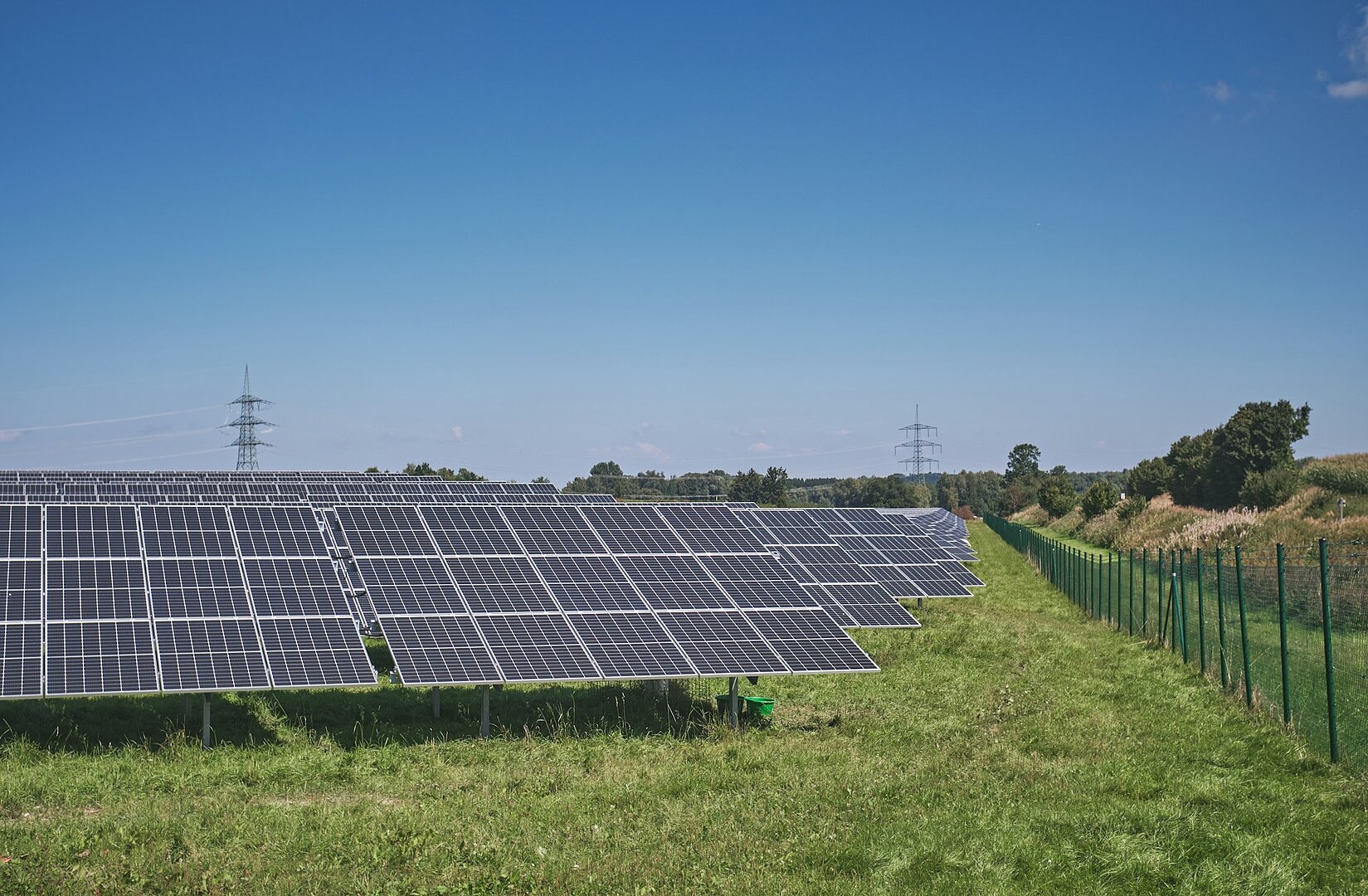Dynamic electricity prices explained: Opportunities for operators of large PV systems in Europe

Dynamic electricity prices are considered an important component of a flexible, decarbonized energy industry. Especially in the context of renewables, such as PV, this pricing model opens up new opportunities for investors and plant operators. But how exactly do they work, and what do they mean for operators of large PV systems? A guest article by Erneuerbare Energien Aktuell.
How are electricity prices determined in Europe?
Electricity prices in Europe are mainly determined on wholesale markets, in particular the spot market. Here, electricity supplies are traded for the next day (day-ahead) or for the next few hours (intraday). The underlying principle is the merit order: power plants with the lowest marginal costs (such as wind and solar plants) are given priority. More expensive producers follow until demand is met. The last power plant to be connected determines the price for all, regardless of the actual production costs.
This market mechanism causes high price volatility, especially in an energy system with a growing share of renewable, weather-dependent generation. Factors such as CO₂ certificates, grid fees, taxes, and national surcharges (e.g., the §19-StromNEV surcharge in Germany) also influence the final prices.
In countries with high PV and wind power capacity, so-called negative prices can occur, i.e., situations in which electricity producers have to pay for their electricity to be purchased. Such price movements offer both risks and opportunities, especially for operators of large plants participating in the market.
What is a dynamic electricity price?
A dynamic electricity price is a pricing model that charges for electricity consumption or feed-in not at a fixed price but based on current electricity exchange prices. Prices are usually calculated hourly or every 15 minutes. The price thus accurately reflects market conditions, which is an advantage for anyone who can act flexibly.
Compared to traditional fixed-price, where electricity is sold or purchased at a fixed price over months or years, dynamic models respond to current supply and demand conditions. For consumers with dynamic prices, electricity can be cheaper or even free at night. Meanwhile, high prices are charged during peak load times. For operators of large plants, this means: The remuneration for electricity fed into the grid can vary greatly, but this is precisely where the potential lies to deliver, specifically when the market offers high prices.
The technical requirements include:
- An intelligent metering system (smart meter)
- A direct market connection (e.g., via direct marketers)
- A digital platform for control and forecasting
Stock market and dynamic prices: How are they related?
Dynamic prices are based on stock market electricity prices, which are determined on trading platforms such as EPEX Spot (for Central Europe) or Nord Pool (for Scandinavia). These markets offer a direct link between supply and demand and thus reflect the actual system status.
The spot market price is subject to strong fluctuations: depending on the supply of solar and wind power, consumption levels, and the grid situation, it can range from -50 to +400 euros per megawatt hour. This volatility makes dynamic prices interesting, but only for players who can actively control their feed-in or consumption.
With the advent of battery storage, virtual power plants, and accurate weather forecasting, dynamic models are also becoming increasingly important for large-scale PV systems. Only those who can react quickly to price signals will benefit from the pricing on the exchange in the long term.
Dynamic electricity prices: advantages and risks for PV investors
Advantages
- More revenue options: Those who feed in at times of high market prices can achieve significantly higher remuneration than with a fixed tariff.
- Flexibility pays off: Battery storage or controllable loads allow price peaks to be exploited optimally.
- Market integration: Dynamic prices promote understanding of and participation in the energy market, which is a plus for experienced operators.
- Digital control: Forecasting tools and energy management systems enable precise decisions and increase efficiency.
Disadvantages
- Price risk: Falling stock market prices or negative prices can drastically reduce revenues.
- Complexity: Operation requires technical infrastructure, expertise, and active monitoring.
- Investment requirements: Smart meters, battery storage, and software solutions all come with costs.
- Dependence on politics: Regulatory intervention or changes in the market model can influence the business model.

How operators of large plants benefit from dynamic prices
To ensure that dynamic prices do not remain a gamble, plant operators need strategic expertise and technical support. In many European countries, participation in direct marketing is mandatory, especially for solar plants above 100 kW. This is where specialized providers such as direct marketers or technical service providers come into play.
Some options for optimization:
- Feed-in management via weather forecasts and market data
- Battery storage for peak shaving or arbitrage trading
- Virtual power plants that bundle generation and actively participate in the market
- Load management in C&I businesses to turn flexibility into a source of income
The market will become particularly interesting with the expansion of large battery storage systems. These enable short-term price advantages to be exploited on the one hand, and system services such as frequency maintenance or redispatch to be provided on the other. This creates a second revenue stream for investors alongside traditional electricity sales.
How can investors and plant owners make the most of dynamic prices?
Dynamic electricity tariffs offer new revenue opportunities for investors, project developers, and operators of large solar parks in particular, provided they are used correctly. However, this requires a forward-looking strategy that combines technical flexibility with sound market knowledge.
A key element here is the integration of battery storage systems that can specifically exploit short-term price fluctuations. Storage solutions make it possible to feed electricity into the grid not immediately after it is generated, but during periods of high exchange prices, a classic arbitrage model. At the same time, additional markets are opening up for system services, such as primary control power or grid stabilization.
Precise forecasting systems and automated control tools are also becoming increasingly important in the field of energy management. This is where specialized providers such as meteocontrol come into play: Monitoring and control solutions enable systems to be aligned with market prices, operating data to be intelligently evaluated, and yields to be maximized, while at the same time managing risk.
In addition, close links to direct marketers and aggregators enable active participation in short-term electricity trading, for example on the intraday market or as part of Redispatch 2.0 measures. Those who focus on digital infrastructure and market connectivity at an early stage will secure long-term competitive advantages.
Are dynamic electricity prices the future? A conclusion
Dynamic electricity prices offer enormous potential, especially for operators of larger solar power plants that are flexible and digitally equipped. They strengthen market integration, reward flexibility, and create new business models around storage and control.
However, they also require a shift in thinking: away from passive electricity sales and toward active energy management. Those who are willing to invest in technology, expertise, and partner networks can benefit from the new market mechanisms in the long term.
With the further expansion of PV systems, digitalization, and the ramp-up of storage, dynamic tariffs are likely to become the norm soon, especially in a European electricity market that is becoming more interconnected and volatile.
Electricity consumers or C&I companies who want to remain flexible should regularly compare electricity prices, especially in times of rising energy prices.
About Erneuerbare Energien Aktuell
Erneuerbare Energien Aktuell is your expert partner on the path to a more sustainable future through renewable energies and green investment solutions. Our platform is dedicated to providing in-depth knowledge and innovative opportunities in the field of renewable energies.
With a focus on the latest developments and facts surrounding renewable energy sources and sustainable investment strategies, we provide you with the tools and information you need to make informed decisions and play a direct role in shaping a greener world.